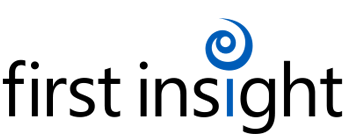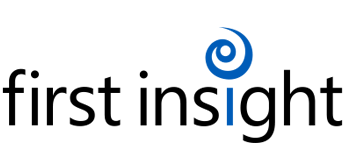
06 Mar 4 Practices Find Solutions with Intuitive Eye Care Software
Does reading an online review on a product you are considering investing in make you feel more confident about your purchase? According to an article by Qualtrics, 93% of shoppers will read an online review before purchasing a product. What if you read practice success stories instead?
The practices we feature below faced daily challenges in running their office efficiently. With the help of MaximEyes.com EHR and practice management software, doctors and staff found solutions that positively impact workflows and improve the patient–provider experience.
Brad Bodkin, OD
Challenge: As Dr. Brad Bodkin was growing his practice, The Vision Center at Seaside Farms, he was also searching for optometry software capable of keeping up with the pace of his growth. He found other eye care systems tedious and stressful when customizing encounter forms and workflows.
Dr. Bodkin’s goal was to find a software system that allowed him to quickly do multiple tasks in the fewest clicks possible, allowing him and his staff to spend more time interacting with patients.
Solution: Upgrading to MaximEyes.com allows Dr. Bodkin to spend less time in front of a screen and more time creating exceptional experiences for his patients. MaximEyes.com offers valuable features such as copying forward the previous patient diagnosis, plans, and procedures in just a few clicks—instantly transferring that data from one part of the system to another.
“When I started using MaximEyes in 2009, it was the best optometry EHR and practice management system—and it still is. Personalizing my workflow with templates puts the focus where it needs to be and speeds up the exam.” –Brad Bodkin, OD
Read more on how upgrading to the new all-in-one MaximEyes.com elevated The Vision Center at Seaside Farms’ practice to manage better patient flow and staff performance, and improve revenue growth.
Peter Falk, OD
Challenge: Dr. Peter Falk and his partner Dr. Michael Downs with ReVision Eye Care needed eye care software to access their EHR optometry system from anywhere. They searched for software that met their immediate needs in optometry and didn’t require them to spend thousands of dollars in IT services to install, maintain, or back up patient data. With these being the most significant challenges they were facing, it was essential for ReVision Eye Care to find a solution that would increase their office efficiency and productivity.
Solution: MaximEyes.com is what Dr. Falk and Dr. Downs were looking for with its secure cloud-based EHR and practice management system that allows them to work remotely anywhere, anytime safely. MaximEyes.com is exceptionally well known for specializing in optometry because it’s made just for eye care professionals. How wonderful is that?
Another great benefit Dr. Falk and Dr. Downs were excited about when switching to MaximEyes.com was that they didn’t have to worry about hiring IT services. MaximEyes.com does it all on the secure Microsoft® Azure multi-layered cloud-based system saving them hundreds of dollars and peace of mind.
“MaximEyes.com is much more user-friendly than our previous optometry EHR (Compulink). Moving to MaximEyes.com, we no longer need to install, maintain, or back up our patient data—the software does it all on a secure cloud-based system. Now we can focus on growth without breaking the bank.” –Peter Falk, OD
Read more on how ReVision Eye Care is using MaximEyes.com to crush almost every challenge that comes their way.
MaximEyes.com has all the tools you need to maximize efficiency so you can focus on your patients.
Mona Hoover, CPC, CPPM, Practice Administrator
Challenge: The Ultimate Eye Care Sante Fe staff had to constantly jump through hurdles with their archaic EHR software because it needed to be updated. Running a successful business is challenging when the right tools are unavailable, and you must continuously find workarounds.
There were many features Mona Hoover (Practice Administrator) and Dr. Mark Rasmussen suggested to their previous EHR vendor to improve the efficiency of their office workflow, but it just seemed impossible to achieve.
Solution: No software is perfect, but with the right team, like the one behind MaximEyes.com, anything is possible. Mona has been thrilled with how fast and accessible customer support is. She says the software has been game-changing. MaximEyes.com became the perfect solution for Ultimate Eye Care Santa Fe because it crosses off three essential requirements when purchasing eye care software: price, ease of use, and customization possibilities.
“Our former EHR system (Practice Director) was so clunky and out of date. MaximEyes.com is worlds above what we have experienced. From sales, starting implementation, and going live, staff and support at First Insight was and continues to remain stellar.” –Mona Hoover, CPC, CPPM
Chet Myers, OD
Challenge: Converting your patient data when switching EHR vendors could be quick and easy, or a complete disaster and take way longer than expected. Dr. Chet Myers discovered that the best data conversion he has experienced so far was when he decided to update his old EHR to MaximEyes.com. He tried converting his practice data to another EHR vendor (Compulink) and had too many issues during the conversion, and the EHR vendor did not focus exclusively on the eye care industry.
Solution: Dr. Myers decided that moving to secure cloud-based optometry software was one of the most critical requirements to convert practice data smoothly. After completing an implementation questionnaire and an onboarding sheet, the MaximEyes.com data conversion and training teams immediately began working to ensure Dr. Myers and his staff had the best experience possible.
And with the many resources available in the self-guided MaximEyes.com Learning Center, Dr. Myers and his team could learn how to use the software at their own pace.
“With MaximEyes.com, the implementation, workflow, and business processes are more straightforward. First Insight has always had an excellent reputation in the eye care industry when it comes to taking care of its customers and focusing on resolving issues as quickly as possible.” –Chet Myers, OD
Read more about Dr. Myer’s story and what he loves the most about his MaximEyes.com implementation and training process.
An Eye Care Software That Delivers You Solutions
MaximEyes.com’s all-in-one eye care software works hard to solve the daily challenges many practices face. Our goal is to ensure you maximize your investment and grow your business to the next level so you can continue to reach more patients and leave an impact on your community.
Request more information to see how we can help your practice become more efficient and productive.





